Mid-summer wildflowers are near their peak now, and you may not have to leave town to find them. American bellflower is prevalent along most of the bike trails in the Des Moines area. During the past week I’ve seen the first common evening primrose and wingstem flowers opening.
Gorgeous stands of cup plant are in full flower too. Look for those along the trail that heads north from Gray’s Lake along Martin Luther King Drive in downtown Des Moines, or off the Windsor Heights trail near the junction with the Clive Greenbelt trail, or along the entrance to the Valley View Aquatic Center parking lot in West Des Moines.
Today’s featured plant may or may not truly belong in central Iowa. The U.S. Department of Agriculture’s Natural Resources Conservation Service shows Iowa within the native range, which covers most of eastern North America. But I have been told that the original range of Black cohosh, also known as black bugbane, probably did not extend as far west as Des Moines. The common names are a bit confusing, given that this plant has white flowers. According to the Eloise Butler Wildflower Garden’s website, “The ‘black’ in the name refers to the color of the root (a rhizome) which is a dark brown.” Incidentally, Blue cohosh, the focus of an Iowa wildflower post last month, has yellow flowers.
I enclose below several pictures of black cohosh, a popular plant with herbalists, especially for inducing labor and treating symptoms of menopause or hot flashes in breast cancer survivors. Scroll to the end for a bonus picture of an Asiatic dayflower blooming. As the name suggests, that plant is not native to North America, but it has become widespread, and you’ll often see it in gardens. Many people consider dayflower an undesirable weed, but I enjoy seeing the flowers pop up in our yard.
Black cohosh or black bugbane has two Latin names: Cimicifuga racemosa or Actaea racemosa. The Eloise Butler Wildflower Garden’s website explains the significance of the first option:
One recognized genus name of Cimicifuga is from cimex for “bug” and fugere meaning “to drive away”. This yields the common name of Bugbane. The species name racemosa, refers to the branches of the flower cluster which are racemes.
The Lady Bird Johnson Wildflower Center’s website describes this plant’s appearance concisely: “A large, bush-like plant, 3-6 ft. tall, with compound, toothed leaves and long candles of tiny, white, fuzzy flowers.” The Illinois Wildflowers site provides a more detailed botanical desription of the foliage and flowers.
The bushy foliage of black cohosh appears weeks before the much taller stem emerges. Here you can see black cohosh leaves near the top of the frame; below, pink flowers have appeared on a wild geranium plant.
Here some Virginia waterleaf are blooming on the left side; black cohosh leaves are visible to the right.
Most black cohosh plants I’ve seen are taller than I am, once the flowers appear, but this plant was just a few feet tall:
I’ve had trouble getting a clear shot of a taller black cohosh plant from top to bottom, but this picture will give you an idea:
This plant’s flowers bloom over a period of several weeks, sometimes more than a month. The Illinois Wildflowers website notes,
The racemes are narrowly cylindrical in shape and erect; they are densely covered with flowers, buds, and fruits (follicles) in varying stages of development (buds on top, flowers in the middle, and fruits below). Individual flowers span about 2/3″ across and they are completely white, consisting of about 24 stamens, a single pistil, and insignificant sepals that drop early.
The flowers start blooming from the bottom.
After a week or two, the buds in the middle have opened:
Toward the end of the flowering period, seeds are starting to form near the bottom of the raceme:
Here’s the bonus shot of a dayflower blooming. The scientific name for Asiatic dayflower is Commelina communis, and there’s a good story behind the name:
Interestingly the genus Commelina was named for the Commelin brothers; Kaspar and Johan were famous Dutch botanists, but their brother died young and so the dayflowers have two beautiful, larger blue petals, and a third small, barely formed white petal.
That transparent petal is hard to see:

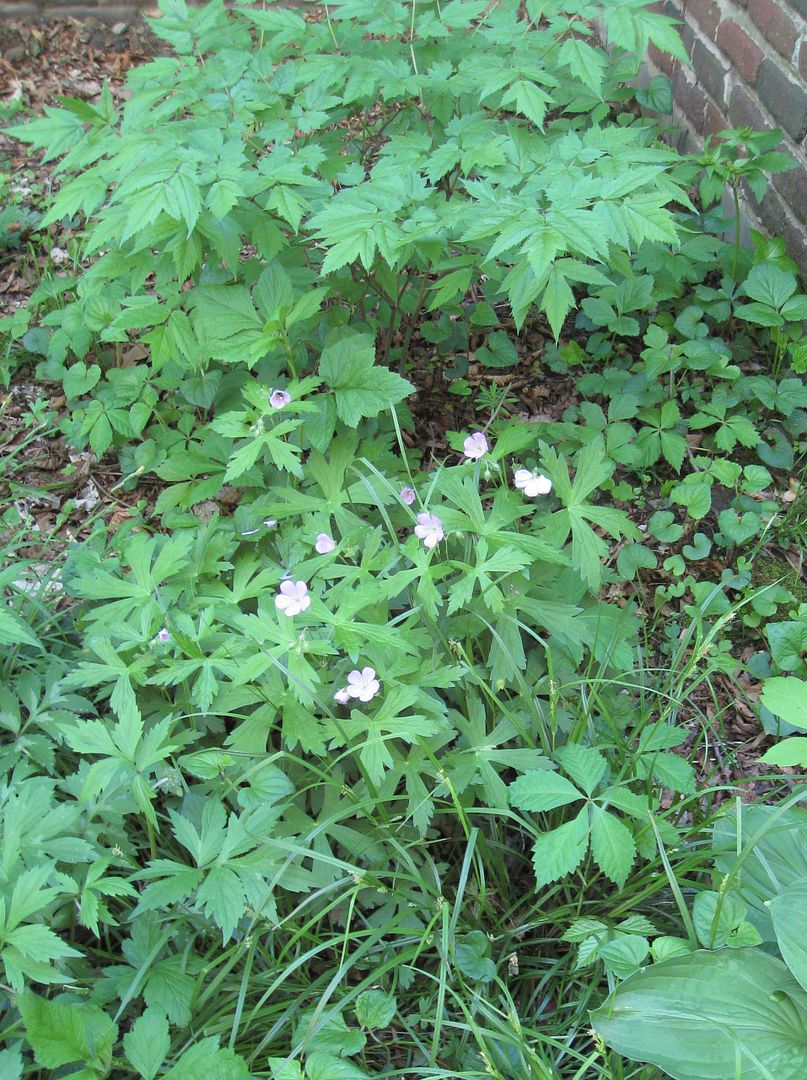

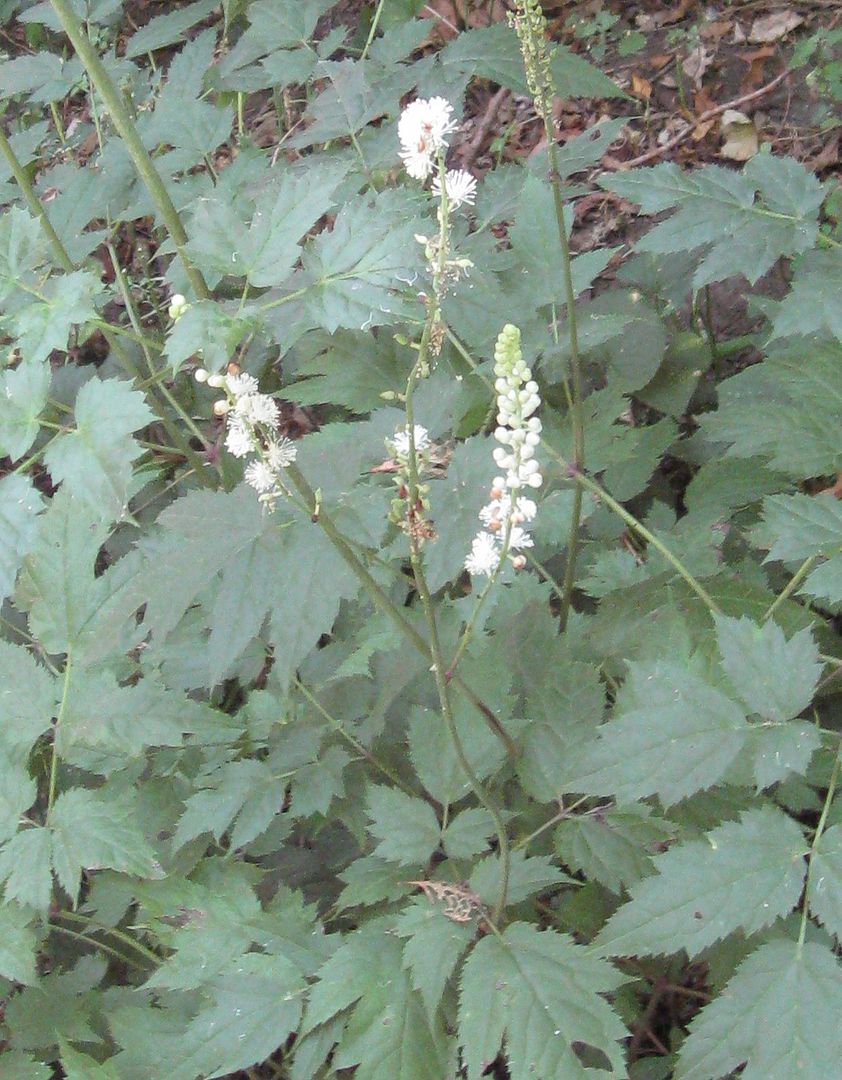
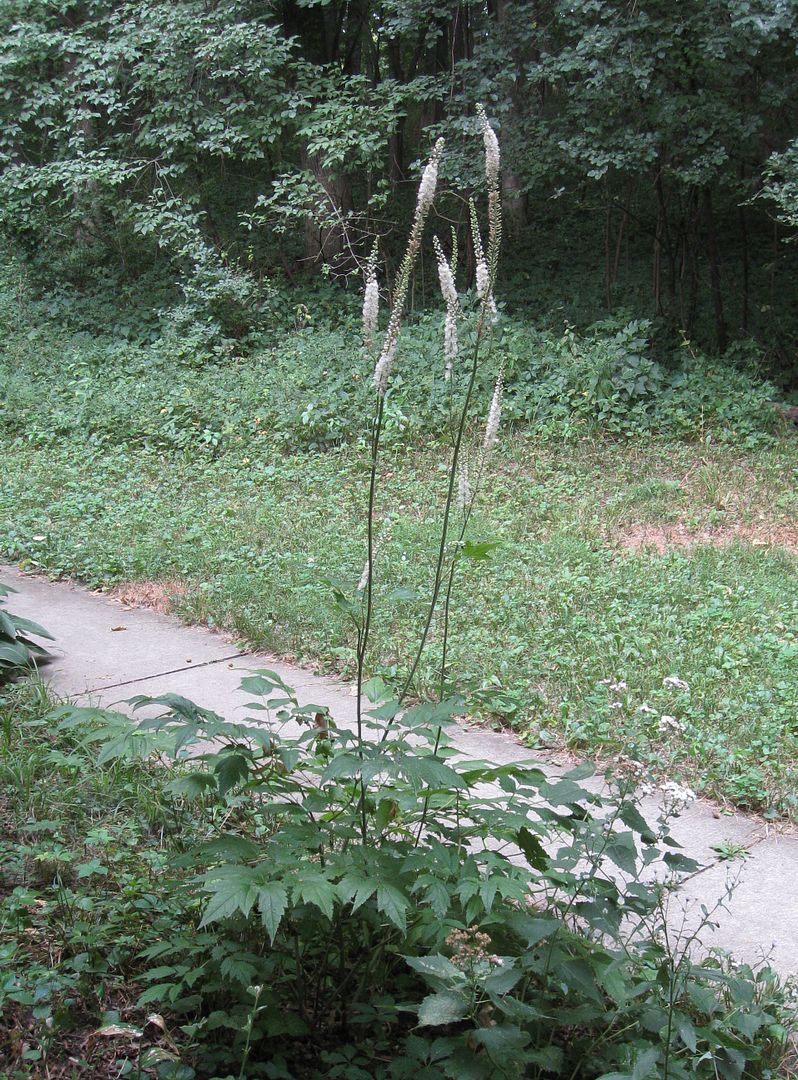
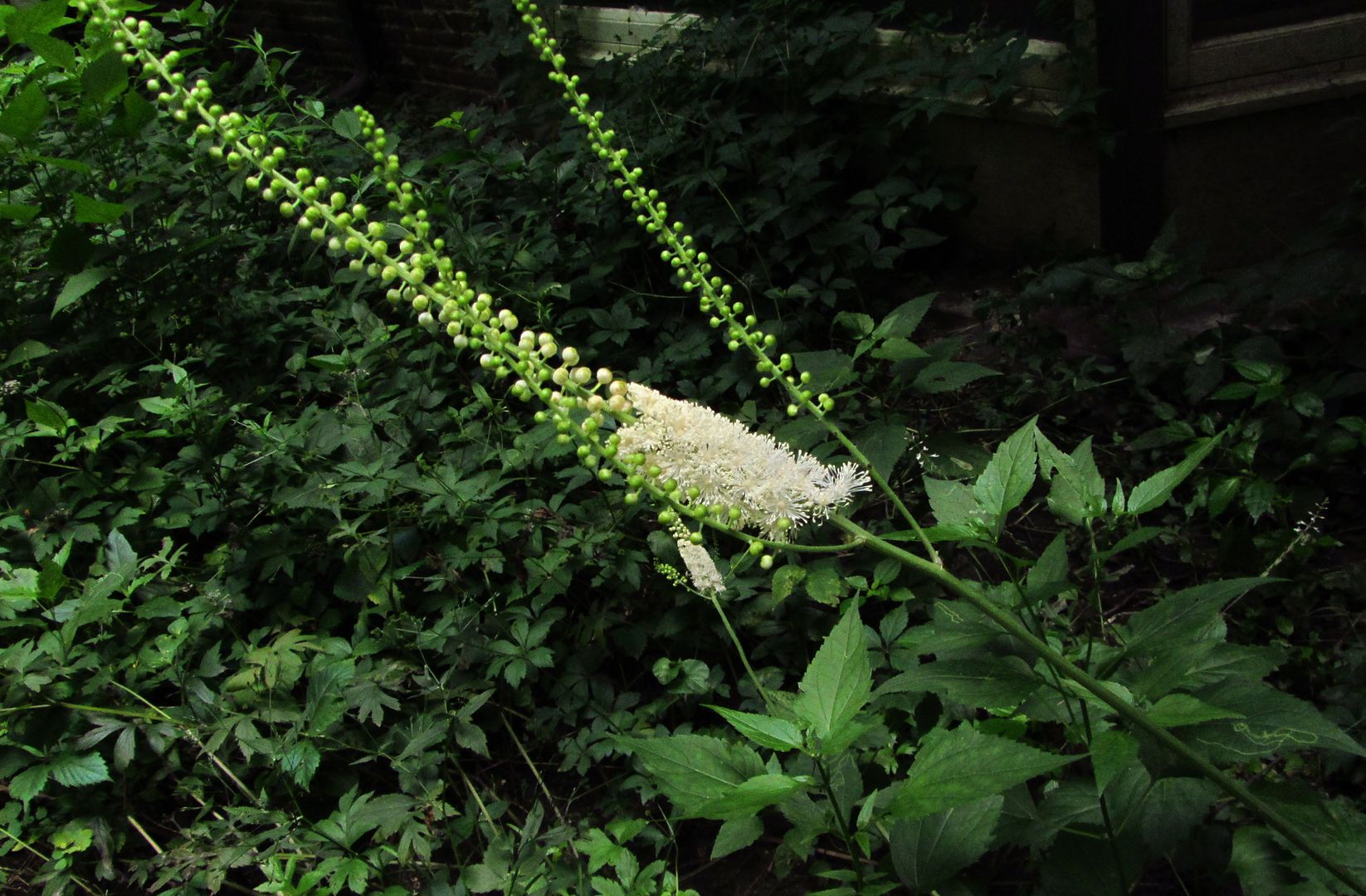
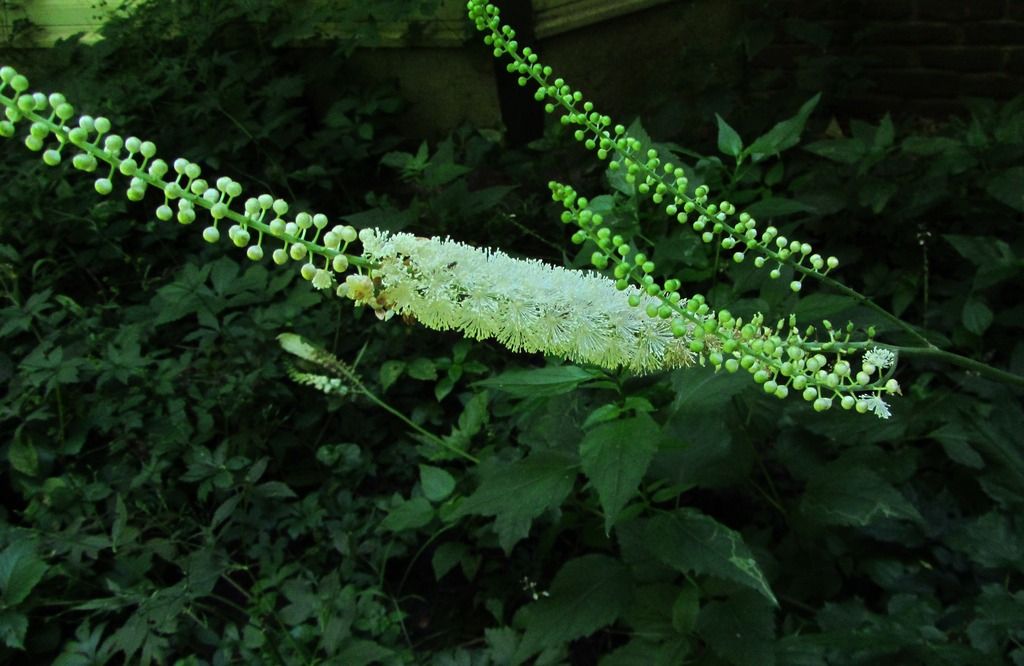

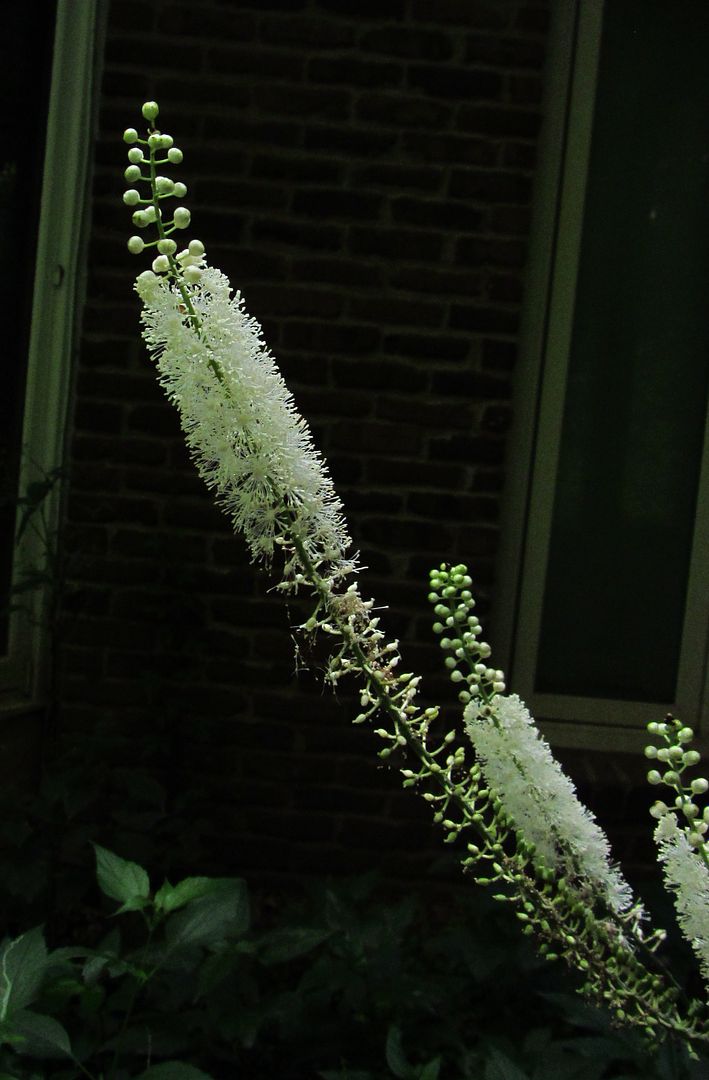
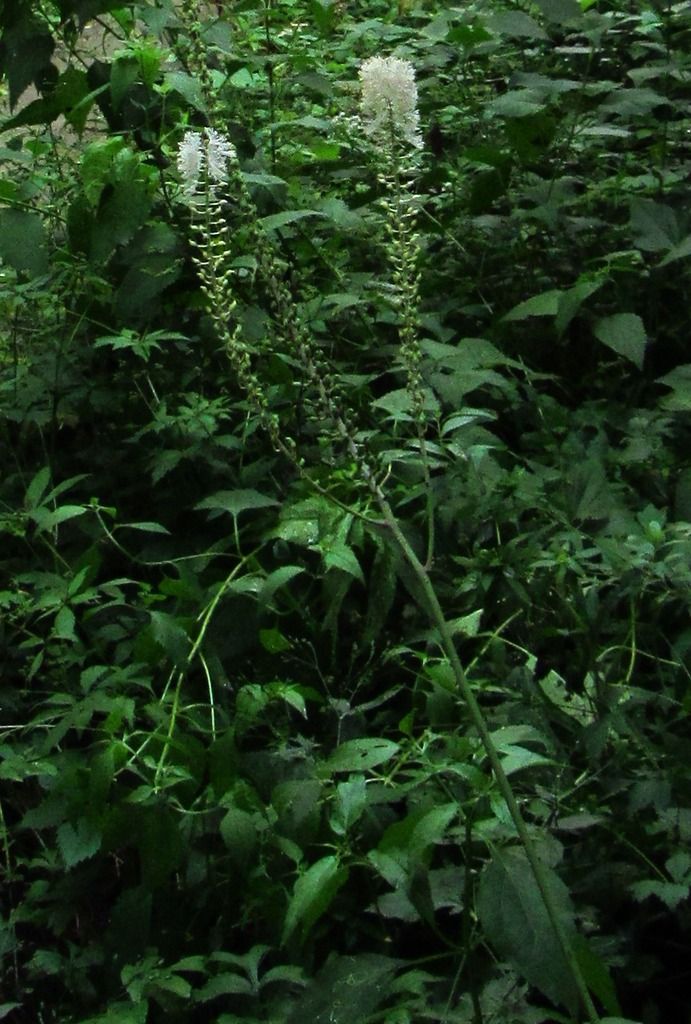
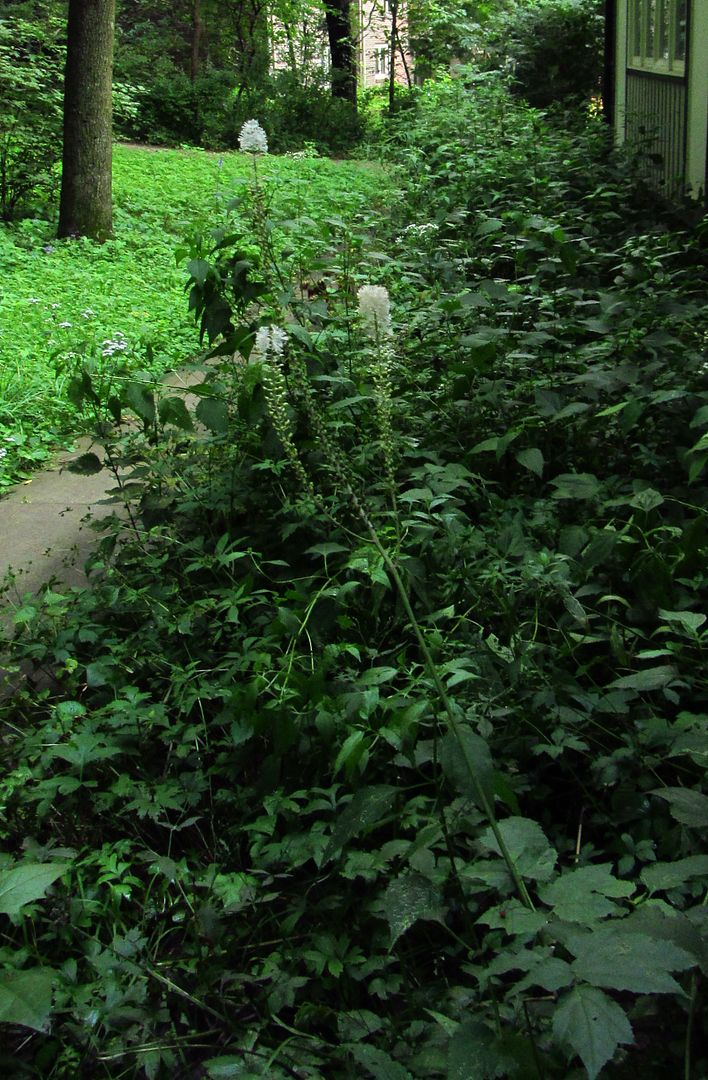

1 Comment
Wow!
Those tall flower stalks are just amazing. Thanks for sharing.
PrairieFan Mon 24 Apr 1:33 PM